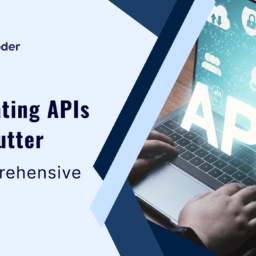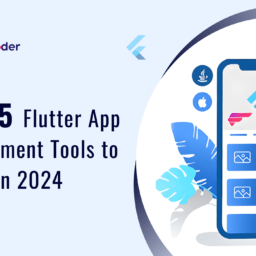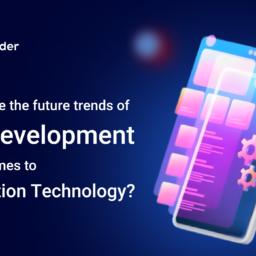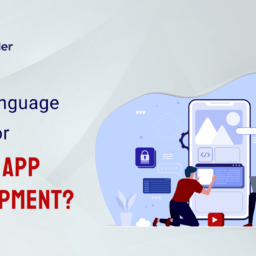
A great app starts with the perfect tech stack!
Whether you’re building the next big social media platform or a simple fitness tracker, choosing the right combination of technologies can make or break your project. But let’s face it: with so many options, deciding on a tech stack can feel overwhelming.
We are here to assist you in deconstructing it because of this. Your choice is influenced by several factors, including your budget, scalability requirements, and the kind of project you’re developing. Are you concentrating on creating apps for iOS app development, Android app development, or maybe hybrid app development? These details play a major role in the stack selection.
So, Let’s dive into the front-end, back-end, and hosting options that will help you create the app in 2025.
Front-End Technologies
The user experience is shaped by front-end tools. They are the secret ingredient that creates aesthetically beautiful and user-friendly programs that entice users to return. Here are a few excellent choices:
- React Native
When it comes to frameworks for mobile app development, React Native is revolutionary. It saves time, money, and ensures a consistent device user experience by enabling you to develop apps for iOS and Android using a single codebase. Do you want to create apps fast without sacrificing quality? Your best bet is React Native.
- Swift
Swift is Apple’s native language for iOS development. Swift offers improved performance designed especially for Apple devices if you’re looking for a smooth iOS app development experience. This language enables you to take full use of Apple’s ecosystem, whether you require smooth animations or blazingly quick load times.
- Kotlin
For Android app development, Kotlin reigns supreme. It’s modern, concise, and designed to make Android apps smoother and more reliable. Developers love Kotlin for its clean syntax and advanced features that simplify coding.
While front-end tools create the interface users interact with, back-end technologies ensure the app functions seamlessly behind the scenes.
Back-End Technologies
The scalability and performance of your program are affected by the back-end decisions you make. Here are some good choices to think about:
- Node.js/Django
The most popular choices for scalable server-side solutions are Django and Node.js. The event-driven architecture of Node.js makes it an expert at managing high traffic volumes. Conversely, Django’s strong framework is ideal for programs that need a strong foundation because it comes with built-in security mechanisms.
- Firebase
Firebase is the ultimate tool for mobile app development with real-time features. It’s serverless, easy to integrate, and automatically scales with your user base. If you’re building chat apps or real-time collaboration tools, Firebase should be on your radar.
- PostgreSQL/MySQL
These databases are classics for handling complex data. PostgreSQL is great for advanced analytics and large datasets, while MySQL is speedy and reliable—ideal for quick data retrieval.
Now that we’ve covered the nuts and bolts of app functionality let’s discuss the platforms that connect it all.
Platforms and Hosting Solutions
The scalability and dependability of your app are directly impacted by the platform and hosting you select. Let’s explore:
- iOS SDK & Android SDK
The complexity of creating these capabilities from scratch is greatly decreased by mobile SDKs, such as the iOS SDK and Android SDK, which make it easier to access device features like the camera, notifications, and location services. With the help of these SDKs’ prebuilt interfaces, developers may rapidly and effectively create functionality while using less code.
- AWS/Google Cloud
For backend support, AWS and Google Cloud are the leading cloud service providers, offering robust and scalable hosting solutions. They ensure that applications remain operational during high traffic periods through features like auto-scaling and global data centers, which enhance user experience by providing fast and reliable access to services.
Now that you have your front-end, back-end, and hosting set up, it’s time to think about how these elements fit the requirements of your project.
Key Factors in Choosing the Right Tech Stack
- Type of App: Simple apps need less complexity, while feature-heavy apps (think AR or ML) require robust tools.
- Platform: Choose from cross-platform, hybrid, or native solutions according to your budget and target audience.
- Features and Functionality: Adapt your stack to the unique needs of your application.
- Resources and Budget: Money can be saved by using affordable alternatives like Firebase or React Native.
- Scalability: Make sure your app is future-proof by selecting tools that will expand along with your user base.
Now that we’ve outlined the factors let’s compare the development approaches to help you make the best choice.
Comparing Development Approaches
- Native Apps
Native apps provide the best performance and user experience. They’re ideal for apps requiring high performance and advanced features like GPS or offline functionality.
- Best Use Cases: Gaming apps, music platforms like Spotify, and navigation tools like Google Maps.
- Hybrid Apps
Hybrid apps are budget-friendly and faster to develop. They’re great for more uncomplicated functionalities but may have performance trade-offs.
- Best Use Cases: MVPs, content-driven apps, and apps with minimal device integration.
- Cross-Platform Apps
Cross-platform apps offer a compromise between price and functionality. They are perfect for interacting with people on both iOS and Android without requiring the development of two separate apps.
- Best Use Cases: E-commerce sites or social media apps that require a unified appearance and feel.
Having compared development approaches, let’s take a sneak peek at the trends shaping mobile app development in 2025.
Top Trends for Mobile App Development in 2025
- AR/VR Apps: Expect immersive experiences to dominate gaming and retail.
- AI and ML Integrations: Personalized user experiences will be a game-changer.
- Low-Code/No-Code Platforms: Making app development accessible to non-developers.
- Sustainability: Eco-friendly tech stacks are in demand right now.
Summing Up!
Choosing the most expensive tools isn’t the key to having the best tech stack. It’s about figuring out what works for your audience, your app, and your objectives. Comparable to building a house, it need a solid foundation to be long-lasting.
Matching your stack to your app’s objectives, financial constraints, and scalability requirements is crucial, regardless of whether you’re leaning toward mobile app development frameworks like React Native or concentrating on reliable back-end solutions.
Are you prepared to create your ideal app? Select the stack that best suits your needs, then get to work building something amazing right now!










